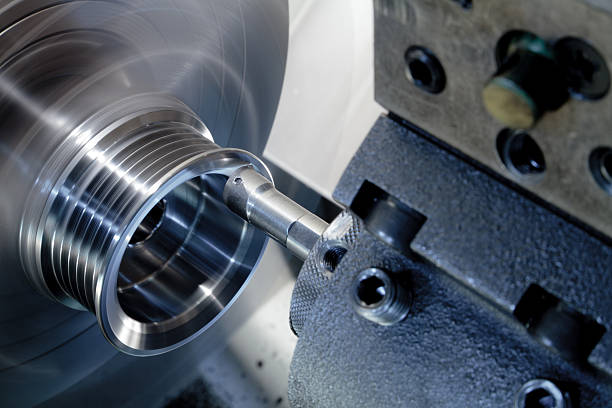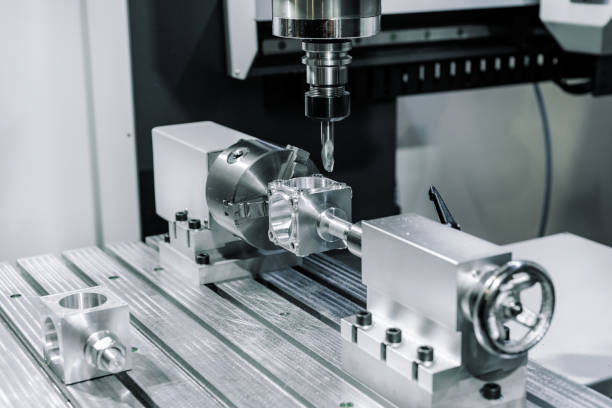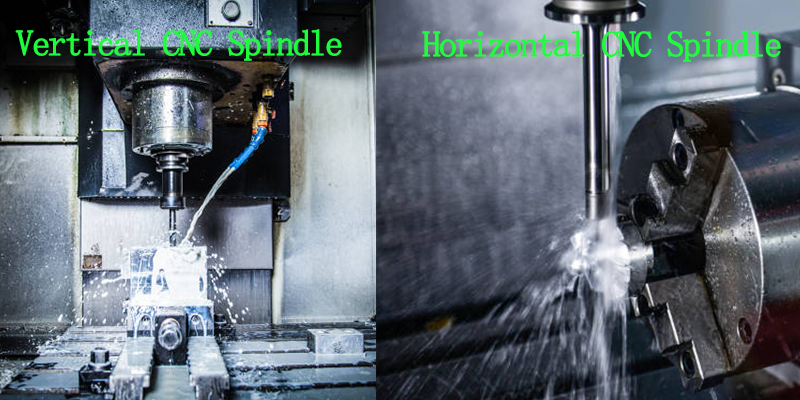CNC machining is considered the most significant process in most manufacturing processes, regardless of the industry or region in the world. Different types of CNC machines and tools allow efficient machining processes, be it cutting out the extra materials, shaping the manufacturing materials, or allowing creativity in the final products manufactured.
CNC machining, or computer numerically controlled machining, is an additive manufacturing process that allows cutting, chipping, turning, routing, grinding, laser, etc., using different tools and machines. Before CNC machining marked the Industrial Revolution, CNC machines were already in use in the manufacturing processes around the world.
Milling operation was also one of the most widely used processes that employed rotary cutters to remove materials by advancing cutters into the workpieces. The tools would be moved around one or several axes to get the desired results.
With the advent of CNC processes, the milling machines were also transformed, and different types of milling machines were introduced. In today’s article, we will talk about the horizontal and vertical CNC mills, operations performed on different milling machines, and which process and mill is the right one for certain operations.
So let’s get into it.

To begin, we will explain the horizontal CNC mill machine.
The word horizontal suggests that the milling machine is horizontally oriented to work on the workpiece. The rotating cylindrical cutters are horizontally oriented to move along up to five axes to perform different manufacturing processes and operations.
The horizontal milling machine is also known as the horizontal machining center(HMC), and the major benefit of such orientation of the cutting tool is the natural and safe falling of the chips produced as a result of the machining. Due to its higher machining power, large-volume jobs are usually more convenient to be performed with horizontal machining centers.
Let’s look into the operations and working of horizontal CNC mills. The basic operations remain the same with stationery workpieces and rotating tools. However, the orientation of the cutting tool is what makes the major difference.
Why is horizontal CNC mill used, or more appropriately, what are the advantages of horizontal CNC mill in manufacturing processes?
As mentioned earlier, the higher machining power is one of the main reasons horizontal mills are preferred for large-volume operations. The other advantages offered by horizontal CNC mills are as follows:
1. Horizontal CNC mills allow safe and natural fall away of the chips resulting from cutting.
2. You can perform heavier and deeper cuts with horizontal CNC mills.
3. The ability to handle diverse angles also allows horizontal mills to be used for handling complex shapes. You can employ different add-ons and get the job done efficiently.
4. Overall productivity is also higher in horizontal mills due to better chip evacuation, handling of large-volume jobs, and complex shapes. Therefore, most manufacturing businesses employ horizontal machining centers in manufacturing processes.
Vertical CNC mill is renowned for its simplicity in performing the machining processes and operations. As discussed about horizontal mills, the cutting tool is vertically oriented in the vertical machining center(VCM). The mill is convenient for more straightforward tasks and cuttings.
The working principle of a vertical mill is similar to that of a horizontal where the workpiece remains stationary, and the cutting tool rotates at certain angles to get the desired output from the machine. Besides, the spindle of a vertical CNC mill can move up and down by pressing against the workpiece during the removal of undesired materials.
There is further segregation of the types of vertical CNC mills used in the manufacturing industry. Turret milling machines are used for working on smaller parts, and bed milling machines are traditional mills used for conventional milling features like grooving, boring, etc.

What are the advantages or uses of vertical CNC mills?
The main benefits of using vertical CNC mills in different manufacturing processes are as follows:
1. Vertical CNC milling machines are a more popular choice in the manufacturing industry than horizontal CNC mills. The reason behind the popularity is the availability across the industry.
2. Vertical CNC mills require less maintenance, which can help lower the costs of milling machines for manufacturing processes.
3. Yet another advantage of using a vertical CNC mill is that it is best supported for low-volume production. Therefore, vertical milling centers are best suited if you require a CNC mill for low quantities or quicker jobs for such jobs.
We have discussed the brief overview of the horizontal and vertical CNC mills. We also talked about the uses of each type of machining center. Let’s discuss the main differences between the two machining centers so you can decide which one is better for certain tasks.
The first difference between the horizontal and vertical milling machines is the orientation of the spindle. It is probably the most significant difference, as spindle orientation will tell how the cutter interacts with the workpiece.
Just like the name suggests, the spindle is vertically oriented in a vertical CNC mill and horizontally in the horizontal center. However, the vertical machining centers offer better precision, and the horizontal one is known for the depth of the operations on workpieces.

Yet another significant difference between the vertical CNC mill and the horizontal CNC mill is the geometry of the tool in each setup. A horizontal CNC mill has shorter and thicker tools that support deeper cuts and are able to work efficiently on large workpieces due to this property.
On the other hand, vertical CNC mills come with cylindrical tools that are long and thin. It implies high precision and accuracy in the cutting jobs done with vertical CNC mills.
We have already discussed a little about the costs and maintenance of both machining centers in different manufacturing industries. However, it is also one of the differences between the two setups that manufacturers and industrialists should know.
Vertical CNC mills are usually more cost-efficient, whether in terms of acquisition cost or maintenance cost. It’s the reason why most regions of the world use vertical CNC mills. However, the cost of acquisition and maintenance in the case of horizontal CNC mills is high. That’s why specific industries with large-volume jobs and bigger workpieces use horizontal mills.
Horizontal and vertical CNC mills also differ in their removal rate of material or what we usually call work speed. If you’re looking for a faster and better removal rate of material, horizontal CNC mills are better suited. The stability and capability to make deeper cuts make these HCMs better for a higher material removal rate.
On the other hand, vertical CNC mills are preferred for specific operations like grooving and facing, which do not require deeper cuts and material removal. In general, the material removal rate is higher for horizontal CNC mills than their vertical counterparts.
Machining sides of horizontal and vertical CNC mills is also one of the significant differences between the two manufacturing setups. It implies how many angles and sides you’re allowed to work on the workpiece in each setup.
So what is the difference? And which one is better?
Inherently, you get more exposure to work at different angles and sides of the workpiece with the horizontal machining centers. This makes HCM more adaptable and capable of handling customized and complex jobs on different workpieces.
On the other hand, vertical CNC mills are usually known for working on a single plane. The add-ons and features available in the case of HCM are not available for the vertical CNC mills. Therefore, the number of operations that can be performed on vertical milling machines is lower than that of horizontal machining centers.
The next difference between the horizontal and vertical milling machines is chip evacuation. Chip evacuation explains how well the chips result from cutting and removing materials from the workpiece under construction.
Like most other aspects, horizontal CNC mills are better in their chip evacuation process and safety. If you’re using the vertical CNC mills, chips will remain on the workpiece space. It will result in lower efficiency and flaws affecting the overall experience of vertical machining. It will also require post-processing to get rid of chip remains.
Alternatively, the chip evacuation process in the horizontal machining centers is better. The chips resulting in machining processes are thrown away from the workpiece space, resulting in a better-machined finish.

Which type of CNC mill setup is more versatile for different machining processes?
The answer is vertical CNC mills.
Why?
Versatility explains how many jobs can be performed in the machining centers and which is quicker. With vertical CNC mills, you can quickly transform boring into a drilling press, which is unusual for horizontal CNC machines. Therefore, vertical milling machines are more capable of adapting to custom work, engraving, prototyping, etc.
We have already talked about the accuracy of the CNC mills. However, which one of the two setups is more accurate in the operations being performed?
The accuracy and sustainability of the horizontal CNC mills are better for deeper cuts. However, the vertical CNC mills’ accuracy is better in shallow cuts and material removal.
Manufacturers are more interested in knowing which CNC mill is better for the specific jobs they want to perform. So, let’s get into what specifications and job requirements to look for when deciding which CNC mill is right for the specific job.
Each type of mill setup indeed has its own merits and demerits. One CNC mill might be better for one job, and the other might win for another job. Therefore, you must define the specific needs, materials, etc., before deciding which CNC mill is better.
A certain job might be better done with the horizontal machining centers. At the same time, the basic drilling and grooving operations might be better done with the bed mills. Similarly, the turret mills are better suited for molding and boring the parts with a lot of cavities. Neither type of vertical CNC mill is recommended for larger workpieces.
So here are the things you need to answer to decide on the right CNC mill setup:
1. Which materials are you going to use for different operations in the CNC mills?
2. What accuracy do you expect from the job that needs to be done?
3. What are you looking for? Are you going to run one offs or production?
4. What are the dimensions and angles of the workpieces you’re looking to work on? Which CNC mill is better suited for the number of dimensions you’re looking for?
5. What are your budget and cost expectations, and how do you want to utilize it for certain jobs? If you have a less extensive job with a low budget, vertical CNC mills are better suited, and vice versa.
6. Do you have the right and proper infrastructure to install the right CNC milling machine in your setup?
7. Are your programmers and operators well-trained to run new machines, and do they have enough knowledge of CAM/CAD?
8. Are you looking for general cutting and boring jobs or want complex, customized cutting on workpieces?
These questions are just what you need to begin for the CNC milling machines. You can further have sessions with the experts and decide which one is right for you.
|
|
Vertical CNC Mill |
Horizontal CNC Mill |
|
Spindle Orientation |
The spindle is vertically oriented in a vertical CNC mill that offers better precision. |
The spindle is oriented horizontally in the horizontal milling center, offering more control for deep cuts and machining. |
|
Tool Geometry |
Vertical CNC mills come with cylindrical tools that are long and thin, implying high precision and accuracy in cutting jobs. |
A horizontal CNC mill has shorter and thicker tools that support deeper cuts and are able to work efficiently on large workpieces. |
|
Cost |
Vertical CNC mills are usually more cost-efficient, whether in terms of acquisition cost or maintenance cost. |
The cost of acquisition and maintenance in the case of horizontal CNC mills is high. |
|
Removal Rate Of Material |
The removal rate is lower in vertical CNC mills. |
The removal rate of material is higher in horizontal CNC mills. |
|
Chip Evacuation |
In vertical CNC mills, chips will remain on the workpiece space. It will result in lower efficiency and flaws affecting the overall experience of vertical machining.
|
The chip evacuation process in the horizontal machining centers is better. The chips resulting in machining processes are thrown away from the workpiece space, resulting in a better-machined finish.
|
|
Machining Sides |
Vertical CNC mills are usually known for working on a single plane. |
You get more exposure to work at different angles and sides of the workpiece with the horizontal machining centers. |
|
Versatility |
Vertical milling machines can adapt to custom work, engraving, prototyping, etc.
|
You can quickly transform boring into a drilling press, which is unusual for horizontal CNC machines.
|
|
Accuracy |
The accuracy of vertical CNC mills is better in shallow cuts and material removal. |
The accuracy and sustainability of the horizontal CNC mills are better for deeper cuts.
|
CNC mills have been revolutionized in the last two decades to facilitate machining. Both types of CNC mills offer production benefits that can differ from each other. In crux, both machining centers complement each other to get precisely cut and manufactured workpieces with varying depth, dimensions, and cutting requirements.